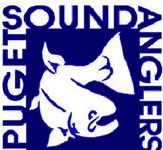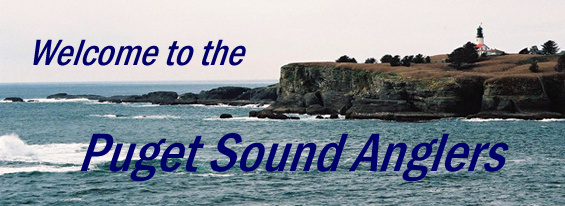|
Boat Trailer
Lights
Lights
usually are a constant headache if used on trailers that are submerged in
saltwater. You freshwater guys don't know what you are missing. There will be all kinds of lights, some of the
"standard" lights will even be advertised
as "waterproof". In actuality very few are. Some
marine dealers will have simple automotive trailer lights on their shelves, & let
the buyer beware attitude.
First
Things First -- The light bulbs
used here are a dual filament, meaning that one bulb will function for both the
dimmer tail light on one filament & the brighter stop light on the other.
If you don't get the proper lights functioning, CHECK THE BULBS first.
They may not be burned out, but simply corroded. One common somewhat cure
is to clean the electrical nubbins on the rear with fine steel wool, then cover
them with Vaseline, to keep off the corrosion. More on the bulbs later in
this article.
Other than the bulbs, the most
common cause of light failure is a bad ground connection SOMEWHERE in the
system.
Shown below is an
e-mail plea from a reader. I will let you guess what my response
was. Don't get me wrong, I do try to respond in a positive manner for
those that have real questions. I have now revised this article slightly.
hello
I have one taillight on my trailer that works only
when you brake but otherwise doesnt work. any advise would be appreciated
Fred
The
Light Units Themselves --
Most
trailer light units will be wired for 2 wires coming out of the unit & will
need to have at least one mounting screw that is grounded inside, grounded to
the trailer frame. This spot will need to be cleaned so that good contact
can be made. It is also recommended that some chassis grease be smeared at
this point to help reduce rusting & future non-conductivity of the
connection. You can tell which one by looking inside the unit &
finding the metal part that the bulb locks into. This one will then more
than likely have the attaching bolt go thru it to the outside.
As an alternate, the white wire
could be wired together from each the RH & LH light units & clear back to the
connector at the hitch & then grounded at the vehicle.
The wires will need to be connected to the wires coming from
the plug-in connection unit. At the point you connect them at the light
unit, it is recommended that you get some heat shrinkable tubing. Slide a
1 1/2" section over the wire, & away enough so that the soldering does
not effect it. After the solder job is finished & cool, slide the
tubing over the new joint. Now take a match & heat the tubing up just
enough that it shrinks & makes a tight seal on both sides of the joint.
You could
use wire nuts or crimp on connectors, but these are not waterproof. It
also has been this persons observations that if you happen to be traveling over
an extended rough road, (the Alcan Hiway for instance) that the weight of the wire nut
connections will vibrate enough to where it will break the wire at the connection
if the wire is not secured to the axle, frame or part of the trailer very close
to the connection.
You may
have to make a choice of units that match your trailer needs. This can
mean that you need a low unit if your trailer is so designed.
All units
are mounted so that the license plate holder is mounted on the LH side of the
trailer looking
forward. All units will come with about 10" of color coded wires protruding for
you to attach to the main trailer wiring. The RH unit will have a brown
& green wire, while the LH unit will have a brown & yellow wire
protruding.
Universal
trailer wiring color code -- The normal
trailer wire colors will be white, brown, green, & yellow.
White -- Ground
Brown
-- Tail lights
Green -- Right hand directional
Yellow -- Left hand directional
Other colors may be red
& blue, and will normally be used for auxiliary (side clearance lights
on larger trailers) and electric brakes. However these are 2 that you
normally do not see on boat trailers.
Ground
wire -- Be sure that your
wiring is grounded to the frame or bumper on the towing vehicle and then ran
into the ground lug on the receptacle. Now be sure that this ground
wire is again bolted to the trailer so it is also well grounded. If you start to have
light problems, check either of these ground connections for good contact FIRST.
Universal
plug in wiring code-- Check the
wiring diagram of your receptacle unit. If the one you buy does not offer
this advise, check with a different brand. It also is a good idea when you
are finished, to mark on the diagram or make up a wiring plug diagram with the
wire colors to which prong that you do use, & keep it with the vehicle or
boat.
Plug in
Receptacles -- Most receptacles will be either a 4, 5
or 6 wire unit. The simplest ones are a flat plastic 4 wire male/female receptacle,
with color coded wires in & out. The metal ones usually will be round
& the female part that fits the vehicle will have a spring loaded door that
covers the prongs when the 2 are disconnected. They have the
5 or 6 prongs & will normally have some internal marking for the prongs showing
where which wire goes. I have settled on the 6 prong plug unit, as
this gives me the option of using the same receptacle unit for many different
trailer requirements with spare connector prongs if needed. Also it is
readily available from many different manufacturers & is usually
interchangeable between manufacturers. It is even available in Canada.
Many trailers come with
the flat plastic 4 wire unit. It is best in this case, to make up a short,
18" or so wire set that plugs into this plastic unit on the trailer &
then on the other end use the 6 prong male plug to your vehicle. In this
manner you can then get another plastic 4 wire unit & wire in a different
male plug if there is a chance that your son or neighbor with a different plug
may tow your boat. Wire this other unit to fit theirs ahead of time
however.
This is important if you
may ever need someone else to tow your trailer. It is especially important
if you have electric brakes. As if you have the brakes wired to the lug
that would normally have been the lights or a directional, your brakes will come
on at times you never intended. And this could lead to HOT brakes & or
a fire.
4 to 3
wire converter for vehicles with separate directional lights -- For
newer vehicles with separate & usually amber directional lights, it is a
pain to wire in an extra set of trailer lights for the directionals. There
is a "little black box" that you wire between your vehicle & the receptacle
that converts 4 wires coming in to 3 wires going out. They are not overly
expensive, $20 or so. It has been noted that these do not last indefinitely
however, and may have to be replaced in 4-5 years.
Bulbs
-- The standard combo trailer
light bulb has dual bayonet lugs on the base. These short lugs will be
offset, one being slightly closer to the base than the other. This will
ensure that the bulb is positioned so that the dual internal filament of the
bulb will always have the stop light filament (which is brighter than the tail
light side) taking power from the brake sender unit. The number of this bulb will usually be #1147
DIFFERENT
TYPES --
Automotive
-- These lights will
usually have the housings made of plastic, with the rear lens cover screwed on.
Many times they will be universal, meaning there is no dedicated RH or LH
side. Most times you will find a LH (license) side with a clear lower lens
cover to illuminate the license plate. You can also find the RH or LH with a
small outside lens cover to act as a side signal light. They usually will have
no provisions for keeping water out. There may not be any gaskets under
the lenses & WILL NOT have any sealing grommet around the wires.
Weatherproof
-- These many times are not
really much different than the automotive, except they may have a gasket under
the lens cover. But usually do not have any type of a grommet or seal around
the wires. They must mean weatherproof from water spray on a rainy day on
the freeway.
Waterproof
-- These can be had in a few
different styles. Some can be the same as the weatherproof, but with
a seal or grommet around the wires.
Air
Trapped -- You will find this
version having an air chamber on the bottom where the lights are. In essence it is the
same as a one ended open can upside down. In use, the air is trapped in
the upper chamber as the trailer is submerged. The height is made so that
water never reaches the bulbs. A couple of drawbacks when using this
style, is that you need to be sure there are no cracks in the case & that
any seals are intact around the wires. Also it is not the best when using
around saltwater as just that close of proximity to the saltwater, the lights
over time will corrode. Usually the light bulb is mounted in a
slide out unit that comes out from the bottom. But I have not had
any luck trying to find replacement internal parts for these.
Sealed
-- These are the true
water-proof lights. They are made as a sealed beam unit. They are
the most expensive to start with, but will last many years.
LED -- These
appear to be the best out there. They may cost more, but as with the
sealed units, are pretty maintenance free.
Things you
can do -- In a pinch, or if you
are trying to save some dollars, you can be selective when purchasing automotive
type light units. Then either silicone seal the lens covers to the body.
Or if you have ideas of ever replacing the bulbs, buy some soft neoprene or
rubber type sheet gasket material, this stuff comes in different thickness,
however about 3/32" would be about right. It is usually offered in
12" square sizes. Now make your own gaskets to go under the lens
covers. Also you should apply some silicone caulking around the
wiring exit hole.
Some trailers will have
side or clearance lights that are wired into the same brown wire as the tail
lights.
If you have a smaller
boat, you can take a wood 2"x 4" & clamp it onto the stern of the boat,
with automotive lights attached to this, with wires running forward to the
vehicle plug in. In this manner you can detach the light bar when you
launch the boat. The lights never get wet.
I have also seen
trailers that have the side rub rails, & the rear upright is taller than
actually needed. On the top of these uprights are mounted the trailer
lights, high & dry.
Copyright © 2004-2005 LeeRoy Wisner All Rights Reserved
Originally started
02-18-02 Last Updated 09-23-2006
to
contact the author click here
|



